The COVID-19 lockdown has significantly impacted food safety, both in terms of news regulations and in the ways countries and institutions have responded.
We recently held a webinar – “COVID-19 - UNDERSTANDING IMPACT ON FOOD SAFETY" – that focused on the insights document analysis could give us in relation to food safety regulations during this unusual time.
Reviewing the data using the capabilities in SGS Digicomply, we saw that the first documents relating to COVID-19 began to appear in February 2020. As we might expect, they initially appeared in China, but very quickly other countries began to address the problem.
The graph below shows the general trends relating to the release of documents dealing with COVID-19 in 2020. Looking at the European Union (EU), a peak was reached in around mid-April, with its tail extending into May and June. This graph was taken on June 16, 2020, but we can surmise that by the end of June the quantity of documents being released would have returned to 2019 levels.
We also wished to see, by way of comparison, whether non-COVID-19 related documents regarding policies and regulations were also in decline during the same time period in 2019. In other words, we wanted to understand if institutions such as the FDA or the European Parliament were 100% concentrated on COVID-19 or if they were still dealing with their normal regulatory work.
As an example, we analyzed the quantity of documents connected to Food Safety Incidents, something we monitor as standard in SGS DIGICOMPLY.
The following graphs show the difference between the two periods:
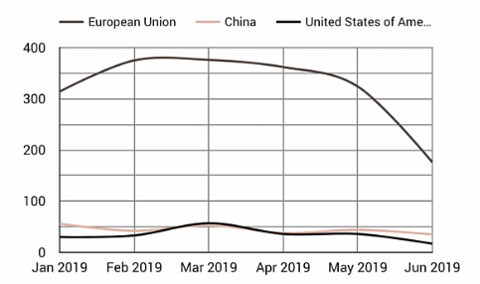
Food Safety 2019 |
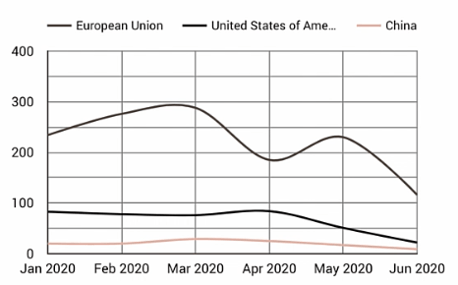
Food Safety 2020 |
By comparing food safety data in both 2019 and 2020, we can see that there was a real decline in 2020. At the same time, we also needed to take into account the fact that during the COVID-19 lockdown there was probably a reduction in import and export activities and less production of certain products. These two factors could have also resulted in fewer incidents overall.
Types of documents and regulations related to covid-19
SGS DIGICOMPLY broadly categorizes document data into one of four types:
- 1. Guidance documents
- 2. Regulations
- 3. News
- 4. Scientific
Further analysis showed that there was, in general, a rise in the number of documents relating to guidance and regulations.
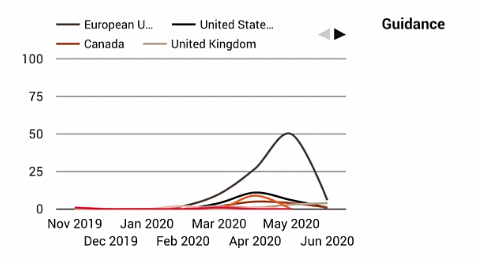
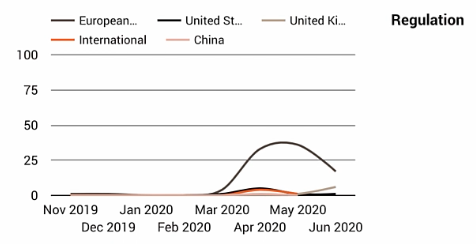
Many of these documents relate to temporary measures that were adopted during the lockdown. This has resulted in us receiving many questions about whether these ‘temporary’ measures should now be considered the new normal.
‘Temporary’ has been used in several different ways. For example, several documents from the FDA talked about a ‘temporary flexibility’ in responding to Covid-19. Several countries also temporarily suspended certain rules fixed by larger authorities. For example, Italy and some other countries have temporarily overruled EU regulations in relation to the local management of food production.
USING AI TO UNDERSTAND DOCUMENT TOPICS DURING COVID-19
Finally, we used AI Semantic Technology to measure and classify the most prominent topics covered in these documents. The results were that nearly 43% of the analyzed documents dealt with issues of National Protection, and the rest (about 57%) dealt with safety measures in the food industry.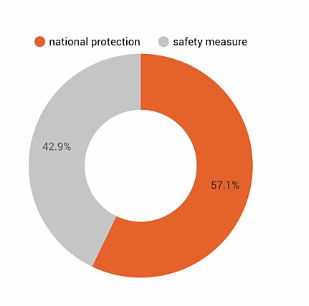
AI engines we also used to identify the most commonly asked questions in relation to food safety and the pandemic. The top five questions were:
- 1. What are the most relevant food safety risk related to covid-19?
- 2. what is the impact of covid-19 on supply chain?
- 3. How local food safety policies been affected by Covid-19?
- 4. How covid-19 affected trade and market exchanges?
5. How covid-19 impacted food safety?
For each of these questions, SGS DIGICOMPLY extracts the best possible answers based on a "confidence" score that uses machine learning to determine the most suitable content within thousands of documents.
As you can see the questions are in natural language, and SGS DIGICOMPLY is perfectly capable of understanding the question and of delivering the highest confidence answer. Our new Questions and Answers Snippet interprets the question and retrieves the most relevant fact that can answer it.
So for example, for the first question, "What are the most relevant food safety risk related to covid-19?" the system retrieves this answer:

And for the third question, "How local food safety policies been affected by Covid-19?", the answer relates directly to a post by the FDA:
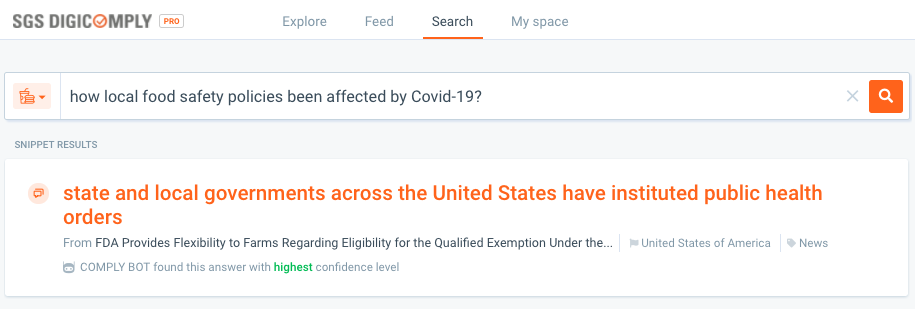
If you want to explore what's inside SGS DIGICOMPLY on food safety regulations, why don't you start by registering for a free SGS DIGICOMPLY account.





.webp?width=1644&height=1254&name=Food%20Safety%20Dashboard%201%20(1).webp)
